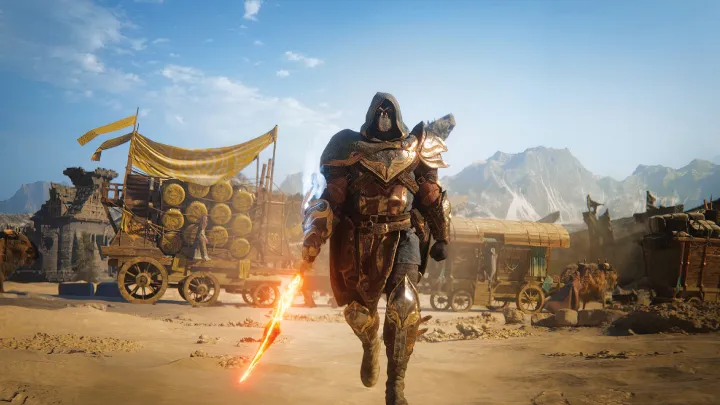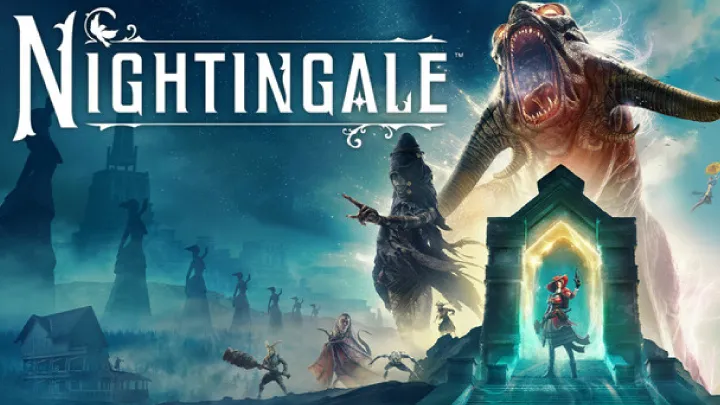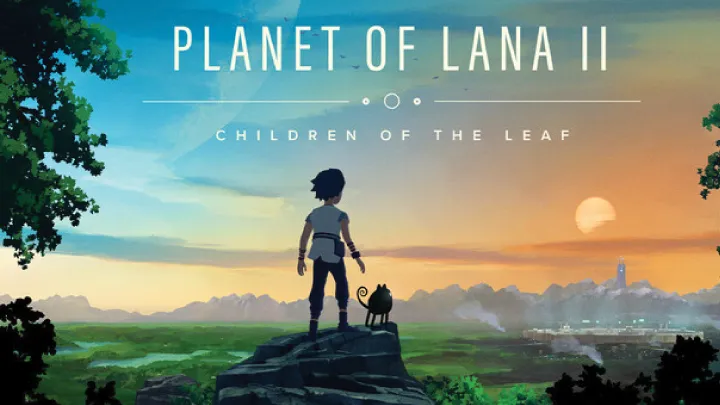
Atlas Fallen emerged in the gaming landscape with the promise of exciting sandbox gameplay, rich storytelling, and a unique combat system. However, a critical issue resonating within the player community is the intricacies of the combat mechanics. This article delves deeply into the evolving combat system in Atlas Fallen, examining its strengths, weaknesses, and the overall impact on player experience and engagement.
The Foundation of Combat in Atlas Fallen
To appreciate the evolution of combat in Atlas Fallen, one must first understand the foundational mechanics that define it.
Core Mechanics: An Overview
The combat system in Atlas Fallen relies on a blend of melee and ranged attacks, emphasizing fluid movement mechanics and versatility.
- Melee and Ranged Combat Dynamics
- Players can switch seamlessly between melee and ranged attacks, creating a diverse combat experience. The combination of these mechanics allows for various play styles, from aggressive melee rushes to tactical ranged assaults.
- Skill Progression and Customization
- As players progress, they can enhance their combat abilities through skill trees that introduce new moves and techniques. This progression system encourages experimentation and adapts to individual player preferences.
The Role of Environmental Interactions
One of the standout features in Atlas Fallen is the environmental interaction that significantly influences combat.
- Using the Environment to Gain Advantage
- Players can manipulate the environment to create advantageous situations. For instance, using sand to build barriers or ramps can provide tactical benefits in combat scenarios, making environmental awareness vital.
- Dynamic Battlefields
- The game's diverse landscapes also affect combat. Sandstorms, terrain variations, and destructible environments require players to adapt their strategies continuously. This dynamic interaction adds depth to encounters and keeps players engaged.
Combat Evolution through Player Feedback
As players delved into Atlas Fallen, their feedback became vital in shaping and refining the combat experience.
Initial Reception of Combat Dynamics
Upon release, players expressed a mixture of excitement and concerns regarding the combat system.
- Excitement Over Hybrid Mechanics
- Many players praised the hybrid combat style, appreciating the fluid transition between melee and ranged styles. The ability to combo attacks fluidly gave a sense of satisfaction.
- Criticism and Challenges
- Conversely, players also voiced concerns about the efficacy of the combat mechanics. Some felt the system lacked depth, with certain combos feeling repetitive after prolonged play. The early stages of the game raised questions about balance and challenge.
Developer Engagement with Community Feedback
Developers have demonstrated a commitment to listening to player feedback, adjusting the combat system to address concerns.
- Patches and Updates
- Following the initial reception, the developers released patches aimed at fine-tuning combat mechanics. Adjustments to specific skills, combos, and enemy attack patterns sought to create a more balanced and strategic combat experience.
- Community Involvement in Design Choices
- Regular interaction with the community has allowed players to feel more invested in the development process. Engaging discussions about combat mechanics provided developers with insights into player expectations and challenges.
Build Diversity: Crafting Your Combat Style
An essential aspect of Atlas Fallen is the ability for players to craft unique combat styles through various builds.
Skill Trees and Customization Options
The skill progression system offers diverse paths for character development.
- Choice of Skills and Abilities
- Players can choose skills and abilities to suit their preferred playstyle. Ranged upgrades enhance attacks to increase distance, while melee enhancements allow for combo-heavy tactics. This diversity provides players with the freedom to build their characters as they see fit.
- Mixing and Matching
- The option to mix and match skills from different trees encourages creativity. Players can blend styles, such as a melee-focused build with ranged capabilities, leading to a highly personalized gaming experience.
Experimentation and Meta Development
The evolving meta within the game encourages players to experiment with different builds.
- Adaptation to Challenges
- As players encounter various enemies and bosses, they must adapt their builds to maximize effectiveness. For instance, players fighting elusive foes may lean toward skills that enhance mobility and precision rather than raw damage output.
- Community-Driven Build Guides
- With the rise of the player community, discussions around effective builds have emerged. Players share insights, creating a culture of experimentation that enriches the overall experience. Build guides proliferate forums and social media, allowing for continuous evolution in combat strategies.
Combat Mechanics: Analyzing Strengths and Weaknesses
Examining the combat mechanics in Atlas Fallen reveals both strengths and weaknesses that impact overall gameplay.
Strengths of the Combat System
Several standout elements contribute positively to the combat experience.
- Fluid Movement and Combat Integration
- The seamless integration of movement mechanics with combat creates a sense of fluidity rarely matched in action RPGs. The ability to dodge and weave while attacking encourages active engagement and responsiveness.
- Stunning Visual Effects
- Combat sequences are visually stimulating, with explosions, magical effects, and dynamic animations creating a captivating battlefield experience. The visual feedback of attacks increases player satisfaction and immersion.
Areas for Improvement
While the combat system has strong elements, there are areas that necessitate further refinement.
- Balancing Enemy Difficulty
- Some players have pointed out that enemy difficulty can be uneven, with certain encounters feeling overly punishing while others seem too easy. Fine-tuning enemy AI and attack patterns can create a more balanced experience.
- Repetitiveness of Combat Scenarios
- Despite fluid mechanics, some players noted that combat scenarios could become repetitive over time. Introducing more varied enemy types and mechanics can alleviate this issue, ensuring gameplay remains fresh throughout.
Tactical Combat: Strategic Elements in Gameplay
Diving into the tactical elements in Atlas Fallen highlights the importance of strategy over mindless action.
Importance of Strategy in Combat
The shift from button-mashing to strategic engagement elevates the overall combat experience.
- Analytical Approach
- Players benefit from analyzing enemy attack patterns and weaknesses, deciding when to engage or evade. Adopting a tactical mindset encourages greater satisfaction, rewarding strategies that lead to victory.
- Cooperative Play Enhancements
- In multiplayer modes, coordinating tactics can change the tide of battle. Designating roles such as tank, DPS, or support creates a more involved gameplay experience, reinforcing the significance of teamwork.
Environmental Tactical Use
As previously noted, utilizing environmental elements plays a significant role in combat strategy.
- Positioning and Evasion
- Players who learn to position themselves effectively can utilize terrain advantages. High ground, for example, may provide better visibility or cover from enemy fire, allowing for more calculated engagements.
- Adaptive Strategy
- Adapting to environmental factors, such as sandstorms that obscure vision, forces players to rethink their tactics on the fly. This dynamism keeps gameplay engaging and challenges traditional tactics.
Community Engagement: Building the Combat Ecosystem
The community's involvement is a driving force behind the evolving combat experience in Atlas Fallen.
Collaborative Play and Events
Events serve to reinforce community engagement while featuring combat elements prominently.
- Seasonal Events
- Limited-time events encourage players to participate in specific challenges that highlight combat mechanics. These events can introduce unique loot, mechanics, and narrative elements that make players feel more immersed.
- Community Competitions
- Organizing competitions focusing on combat showcases allows players to display their skills while fostering a sense of community. These events promote collaboration and healthy competition, enhancing player retention.
Feedback Forums and Developer Interaction
Player engagement with developers through feedback forums shapes the future of combat mechanics.
- Iterative Development
- Constructive feedback from the community leads to consistent development improvements. Patches addressing specific bugs, balance issues, and player suggestions strengthen the combat system.
- Transparent Communication
- Developers who maintain transparency about upcoming changes create trust with the player community. Informing players of adjustments based on feedback encourages ongoing dialogue and investment in the game’s evolution.
Future Considerations for Combat in Atlas Fallen
As Atlas Fallen continues to evolve, both players and developers must consider the potential directions for combat mechanics and systems.
Expanding the Combat System
Innovative developments can keep the combat experience engaging long-term.
- Introduction of New Mechanics
- Developing entirely new combat mechanics or expanding existing systems can rejuvenate the experience. Features such as cooperative combat moves or environmental traps may introduce fresh tactical layers to gameplay.
- Enhanced AI and Enemy Design
- Improving AI behavior can lead to more challenging and rewarding encounters. Unique boss mechanics and mechanics for regular enemies can diversify the combat landscape, sustaining interest over time.
Long-Term Player Engagement Strategies
Sustaining player interest requires continuous adaptation to changing expectations and gameplay experiences.
- Adding Depth to Character Builds
- Introducing deeper layers to build diversity can enhance player agency. For instance, adding specialized branches within skill trees can offer unique abilities that encourage collaboration between varied character builds.
- Community-Driven Enhancements
- Regularly engaging with the community to understand their desires can lead to meaningful changes. Hosting feedback sessions or incorporating player-created content may build a richer tapestry for combat experiences.
Conclusion: The Evolving Combat Landscape in Atlas Fallen
In summary, the combat system in Atlas Fallen represents a significant advancement within the action RPG genre, providing a unique and engaging experience for players. The evolving mechanics, player feedback, and community engagement contribute to a dynamic environment that encourages creativity and experimentation. As Atlas Fallen continues to adapt and grow, the use of player insights and developer responsiveness will be essential in crafting a combat experience that remains thrilling, challenging, and rewarding. With ongoing support and innovation, the future of combat in Atlas Fallen looks promising, poised to deepen player satisfaction and engagement.

















